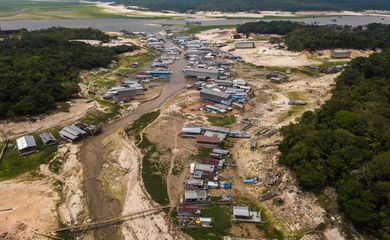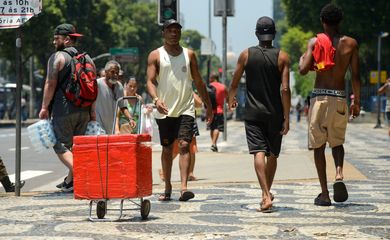Brazil sees temperature rises of up to 3ºC in 60 years

Over the last 60 years, warming in some Brazilian regions has been greater than the global average, reaching up to 3ºC in average daily maximum temperatures in some regions, the report Mudança do Clima no Brasil (“Climate Change in Brazil”) found. According to the study, since the beginning of the 1990s, the number of days with heat waves in Brazil rose from seven to 52 by the beginning of the current decade.

“Extreme events—like severe droughts and heat waves—will become more frequent, with the likelihood of unprecedented climatic events,” the report points out.
Launched this week, the study is a cross-section of the latest report by the Intergovernmental Panel on Climate Change (IPCC) and other current scientific studies—the result of an effort that brought together the Ministry of Science, Technology, and Information and the social organizations of the Rede Clima, WWF-Brasil, and the Alana Institute.
Projections
Based on the unprecedented projections for the next 30 years presented by the IPCC, the researchers also concluded that if the 2°C limit is reached, critical thresholds for human health and agriculture will be exceeded more frequently by 2050.
In this scenario, the population affected by flooding in Brazil is likely to increase 100 to 200 percent. Vector-borne diseases such as dengue fever and malaria will also cause more deaths.
The Amazon, for example, should lose half of its forest cover due to a combination of deforestation, drier conditions, and a surge in fires. River flows will be reduced and the drought will affect the northern states of Amazonas, Acre, Rondônia, and Roraima the most. The rainfall cycle in Brazil and South America will also be affected.
Fishing stocks will be reduced by 77 percent, with a reduction of 30 to 50 percent of jobs in the sector. The estimated impact on revenue relative to the GDP is 30 percent.
The Northeast, home to almost 55 million people, could see 94 percent of its territory turned into desert.
People living in large Brazilian cities such as São Paulo, Rio de Janeiro, and Belo Horizonte will be exposed to water shortages. In the 2°C scenario in 2050, 21.5 million people in urban areas will probably be affected by the breakdown of the water cycle and the impact on crops.
Measures
In their conclusions, the experts consider it necessary to maintain the 1.5ºC limit on the average increase in global temperature and not allow greenhouse gas emissions to continue growing. In order to do this, national policies need to be reworked. “Brazil’s targets have not corresponded to the scale of the reduction in emissions incumbent on the country,” the report reads.
Among the immediate adjustments pointed out by the study are halting deforestation in all biomes, investing in payment programs for environmental services to encourage conservation, migrating to low-carbon agriculture through agroforestry systems, and integration between crops, livestock, and forests.
The integrated management of water resources and the adoption of agricultural systems that are resilient to climate change are pointed out by scientists as ways to guarantee water and food security.
Nature-based solutions are necessary measures to adapt cities to climate change, with an increase in green areas that make urban regions more permeable with natural drainage. The report also stresses the need for investments in low-carbon public transport, including efforts to encourage the use of collective and non-motorized transport.
The study also notes the role of international cooperation in climate finance, the development and transfer of clean technology, as well as collective reinforcement to reduce greenhouse gas emissions.







